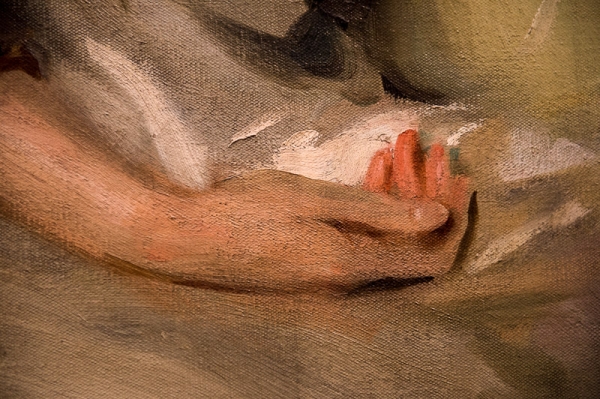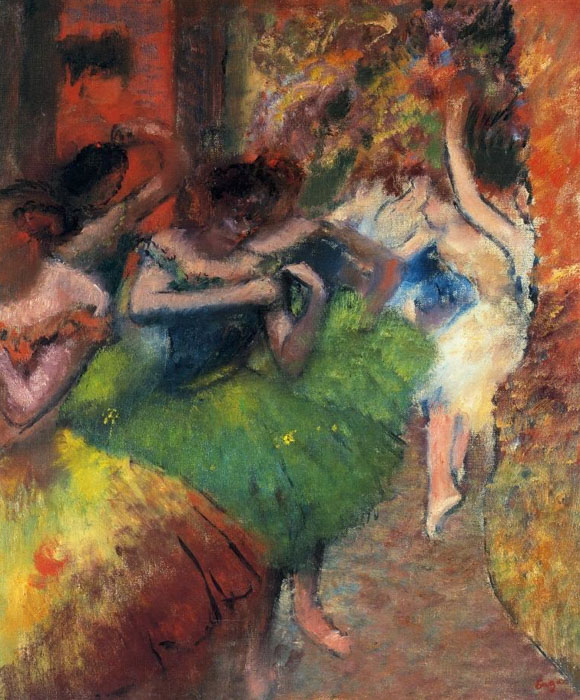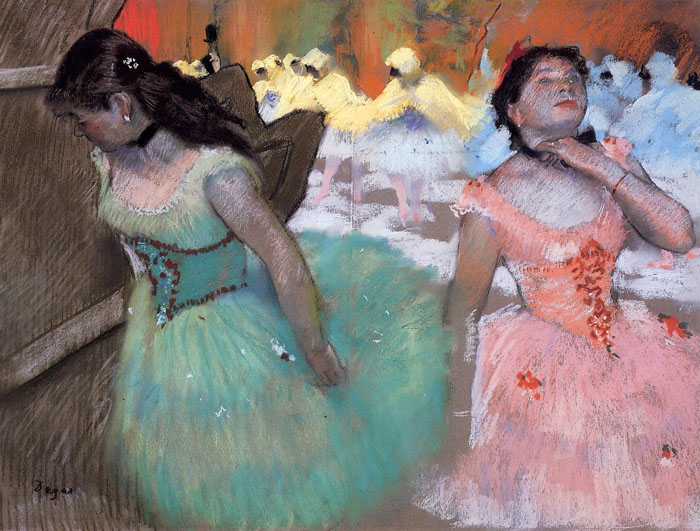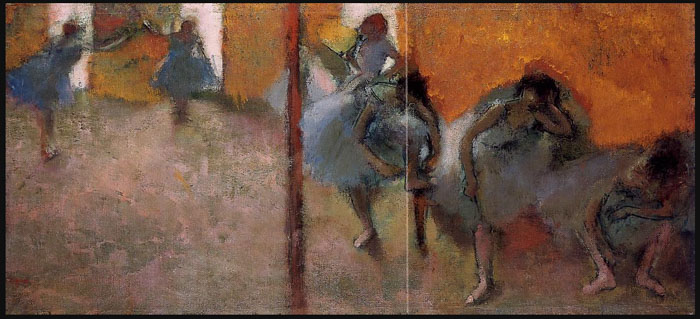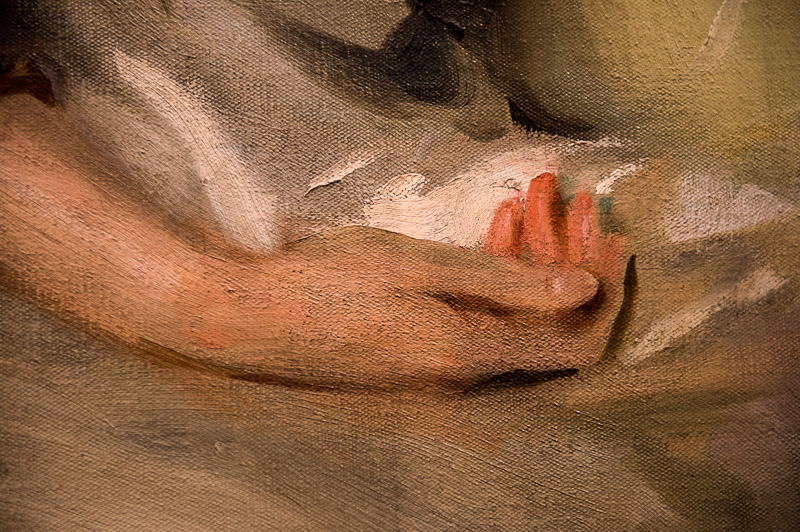What Makes a Painting Seem Overworked?
After going to the Brooklyn Museum of Art in New York for the John S. Sargent Watercolor Show with Dylan Scott Pierce we went to the Metropolitan Museum of Art and noticed a particular area in one of John S. Sargent’s paintings. As I looked at the hand I saw that there seemed to be an appearance of different marks made by different brushes.
Degas told John Singer Sargent – “…that anyone could keep a painting fresh and spontaneous in an hour and a half, but try to keep a painting fresh when you work on it for three years,” as did Degas in his Ballerina series!
Degas went on to say to Sargent
“…that if you do not like the stroke you put down than scrape it and do it again”.
This prompts my wild imagination, so here goes… Just Imagine Degas on stage trying to frantically capture the ballerinas who are frantically changing their clothes. As they peek through the curtain waiting to go back on stage, the ballerinas are not ready.
Degas has too many ballerina’s in his scene, too many with unfinished arms and areas not painted, yet he knows they are seconds from leaving his scene! Paint flying!, Areas unpainted!.
Sounds great, Plein Air Painting at it’s best!
Degas did not do many of those paintings on stage. He painted from photographs. Degas has a desired message, to make the viewer feel the ballerina’s feelings, as well as his. He did this through the mark he made, one at a time, analyzing each stroke and questioning whether that stroke added to his message. He did this for years while working on The Ballerina paintings.
What caught my eye was the variety of brush strokes in this small area
The longer strokes have some type of oil, as a medium- longer strokes, some strokes are without a medium – much shorter. Some areas are with a fan brush, some with a sable hair used while the painting was wet, some when the painting dried and he used a bristle brush leaving a much thicker, stronger stroke.
Why?
There they were, marks made with, and without, medium. Marks are made with different textured hairs, at different times in the painting. Some marks were made after the painting had dried with and without a painting medium!
This small area was like a symphony for my eyes, a real treat. The entire painting with its color, contrast and texture was Sargent’s Orchestra.
This has the appearance of a plan!
It was easy to see wherever Sargent wanted the paint to be thick he left the area next to it thin, like a watercolor wash. This could be intentional, purposeful, and well thought out. I am not saying that the entire painting was classically thought out, but some parts were!
That left me with these thoughts about art made today :
Do we plan our painting with the Art Tools we have?
Do we use different brushes for different messages?
Do we use texture as an Art Tool Today?
Could each stroke start to have a purpose? a thought, a reason?
But then you would have to have a story or message to tell.
Then it would have to be your art, your perspective of whatever you were seeing.
Your hope, your wants, your desires, art tools – not rules. Then you would know that The Question is the Answer.
Do you ask yourself the question to find the Art Tool to use?
Chris diDomizio
In our art program in each drawing class and each painting class the sole purpose of each exercise is to teach the artist to hold every thought captive and to be aware that something happens with each stroke. In this art school we strive to train and equip the artist to make their art. Art tools not rules. Atlanta Art Classes.

